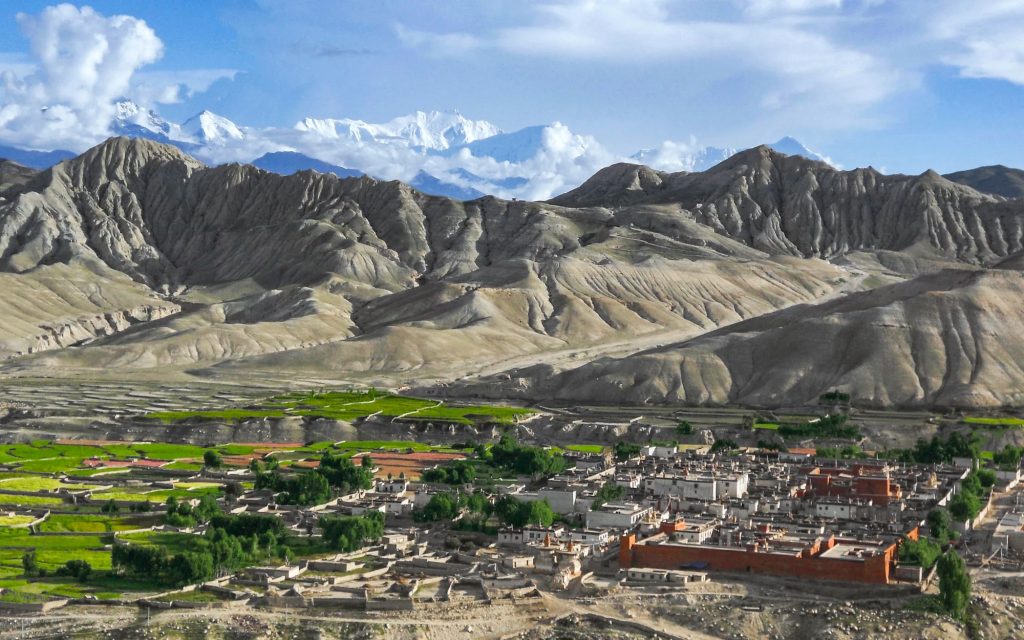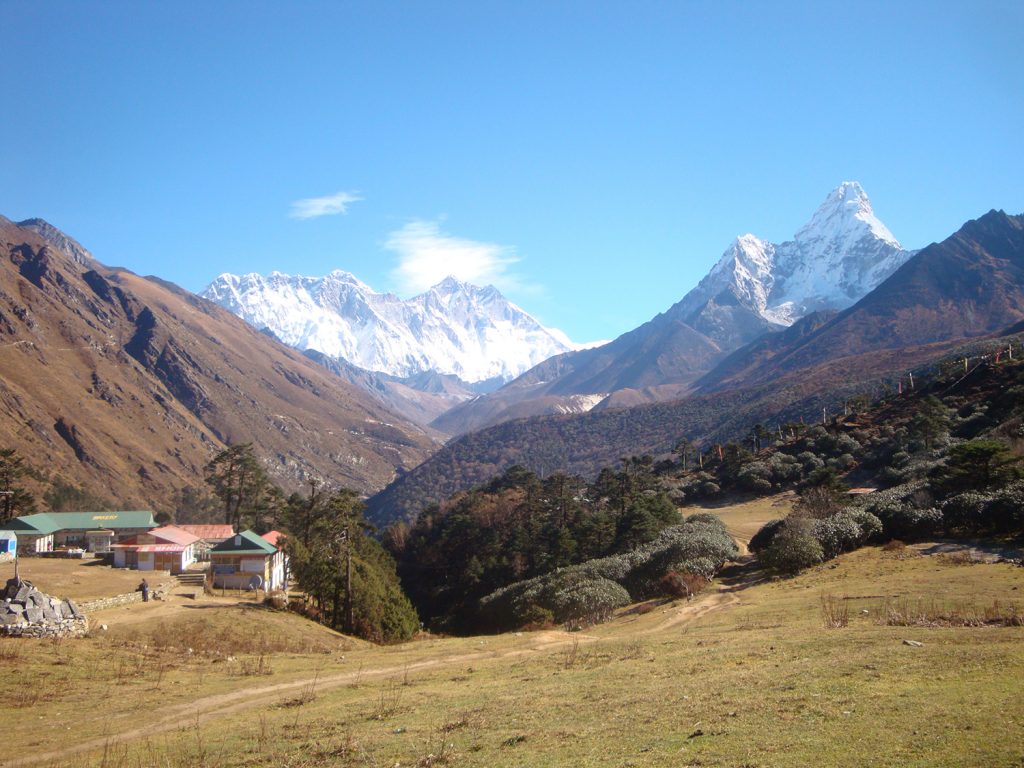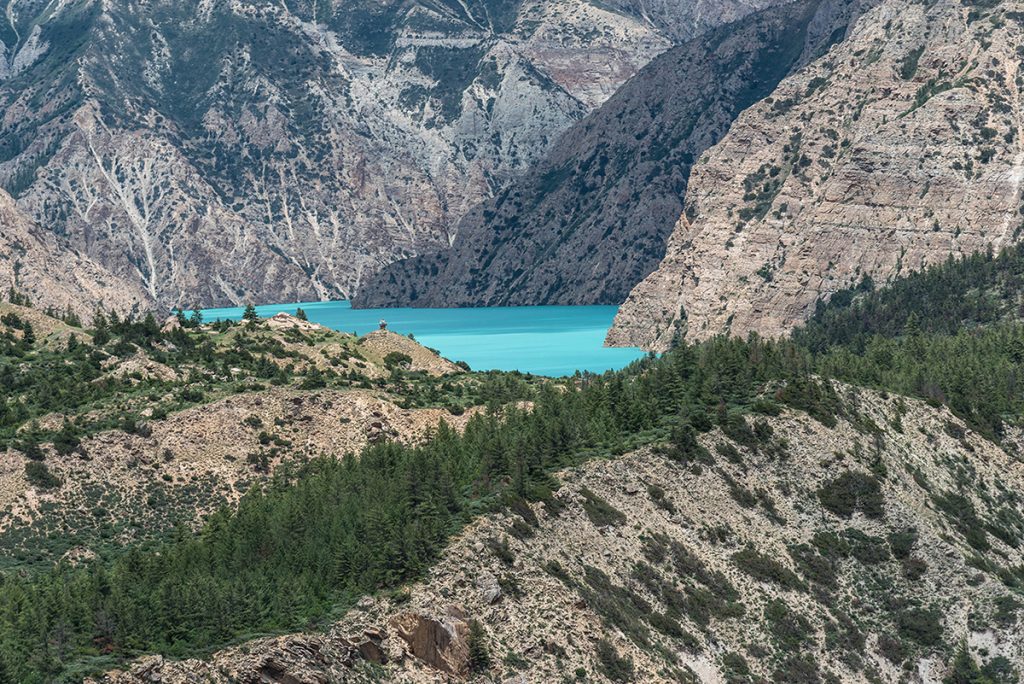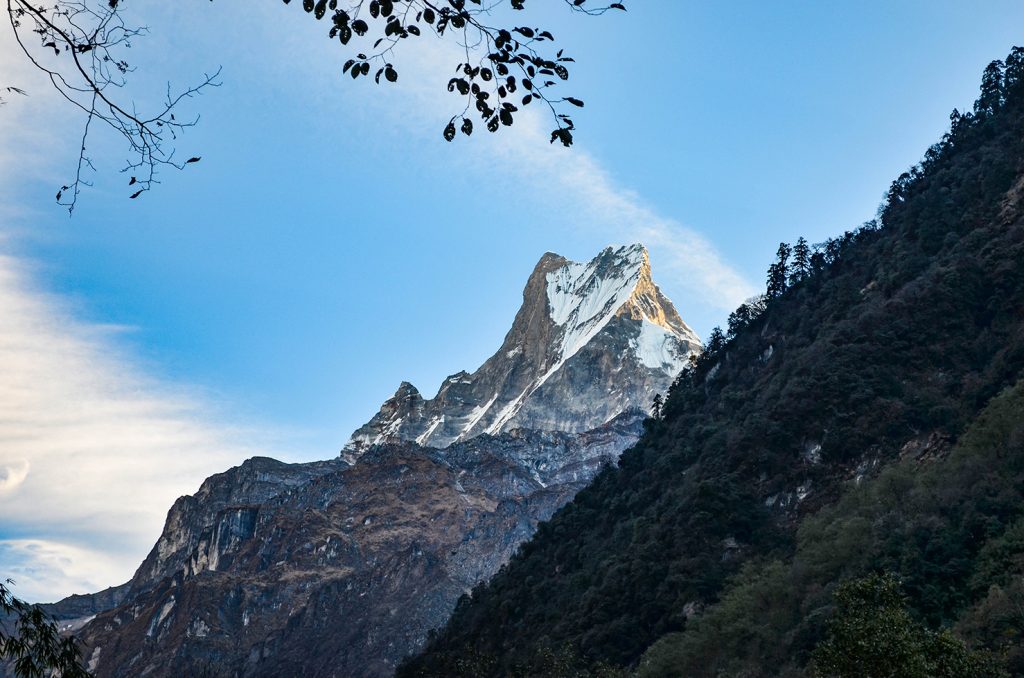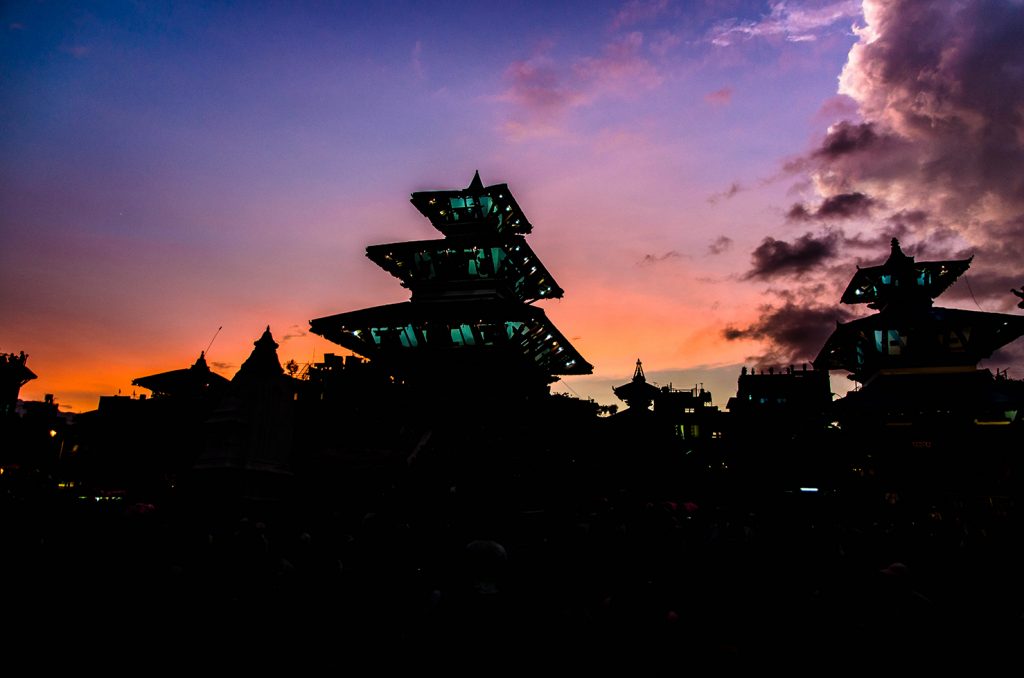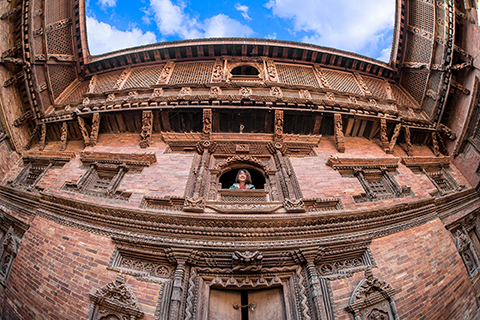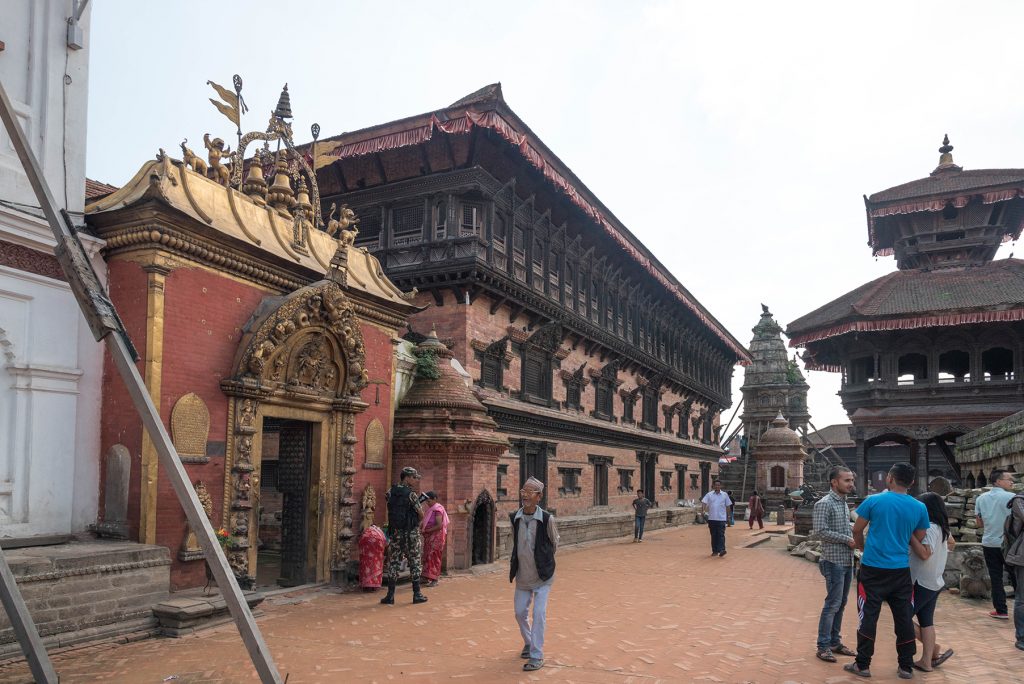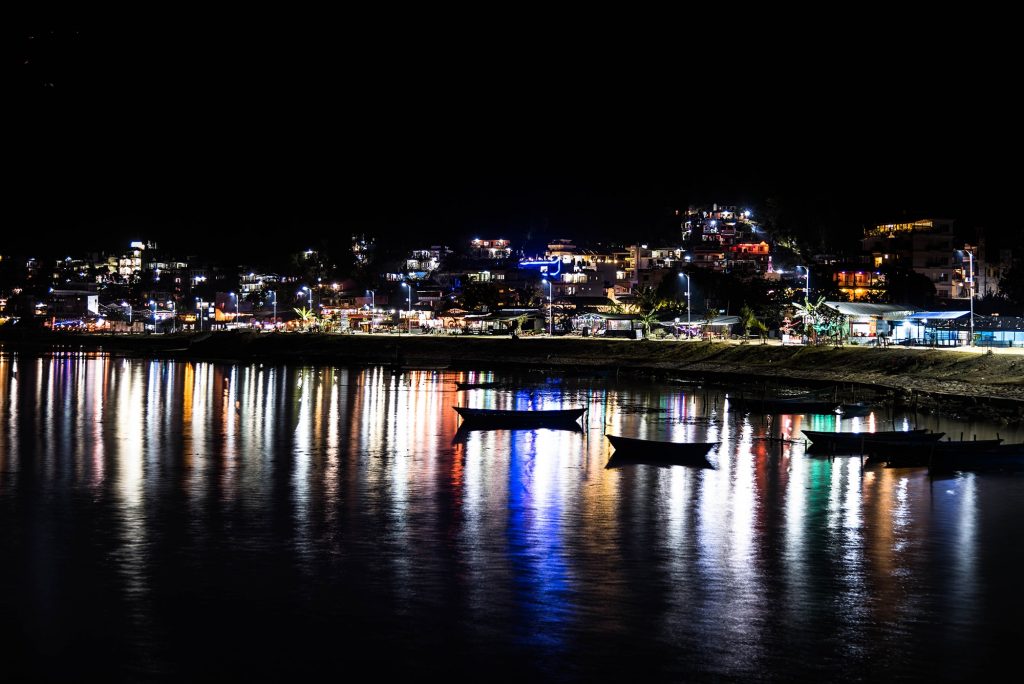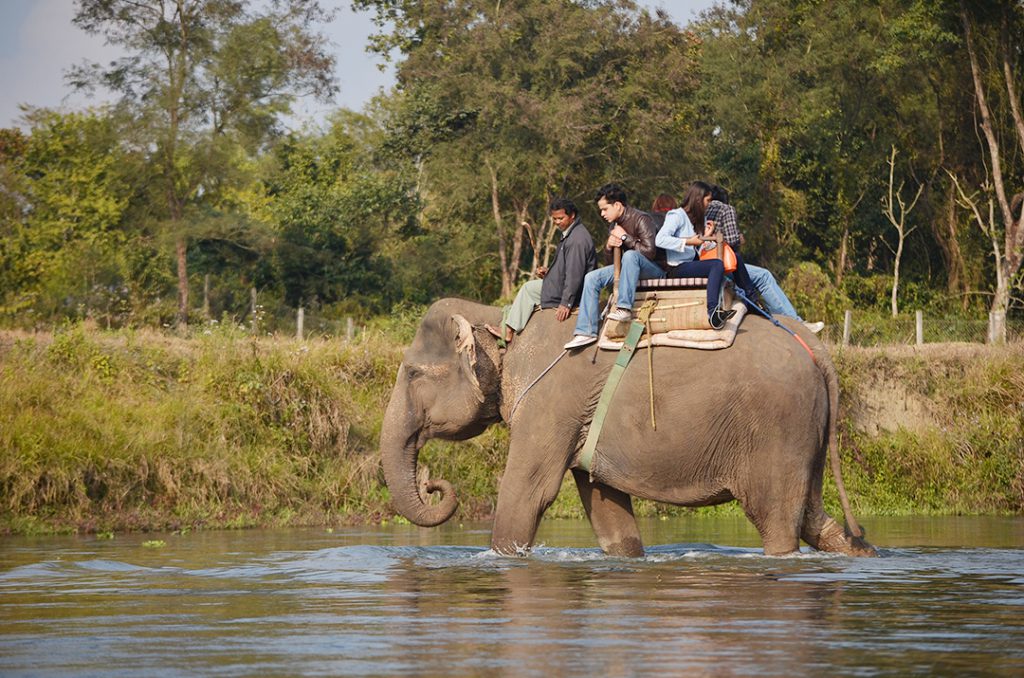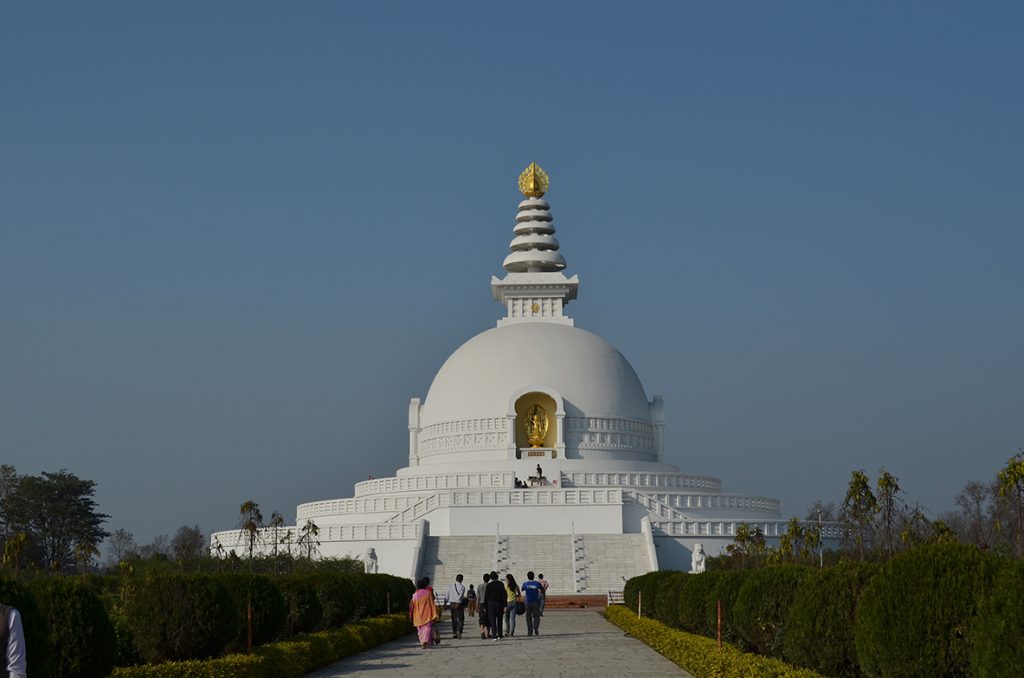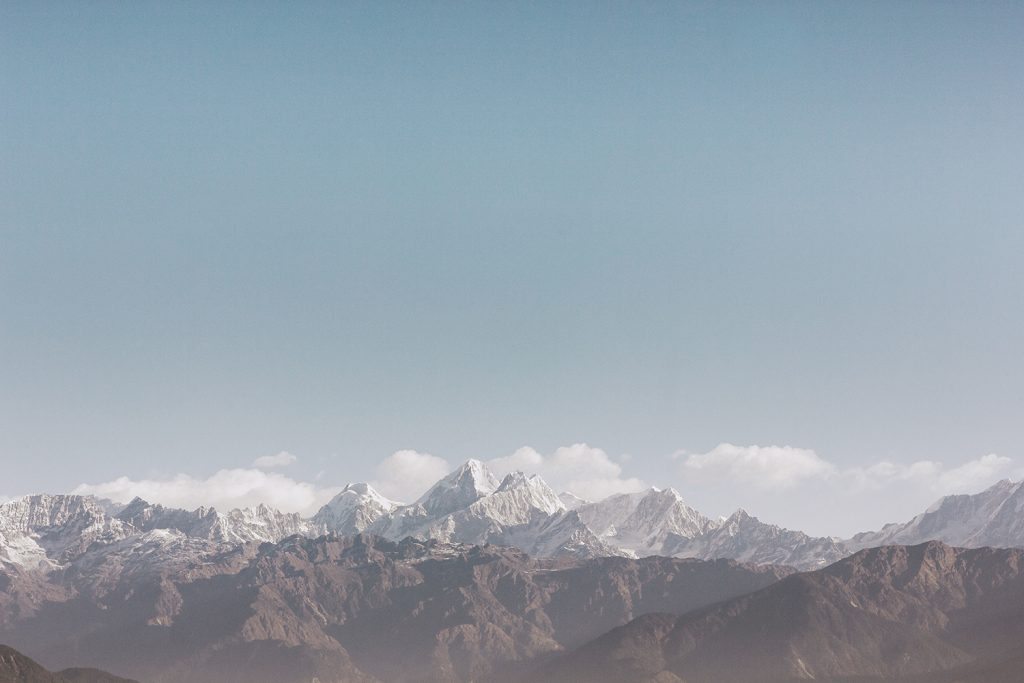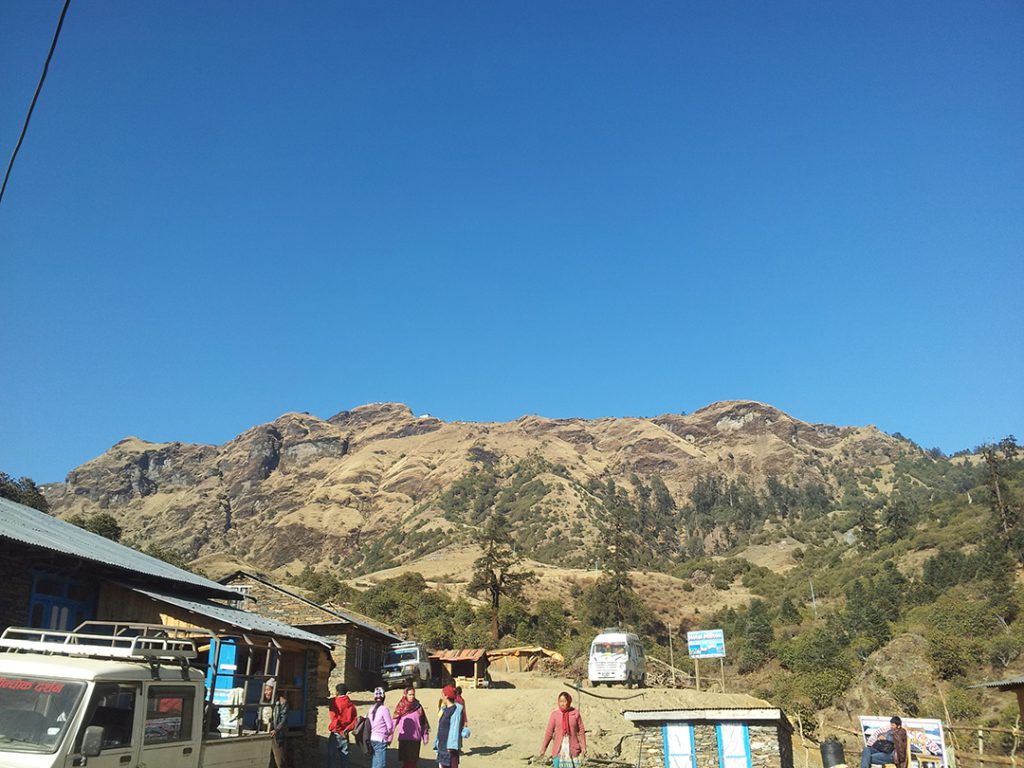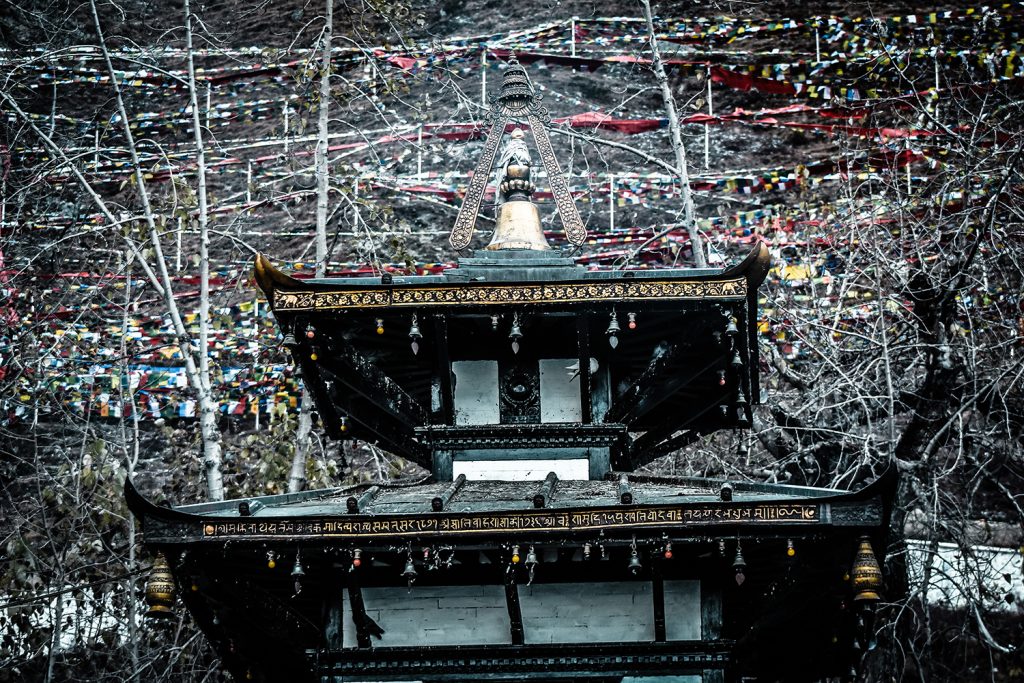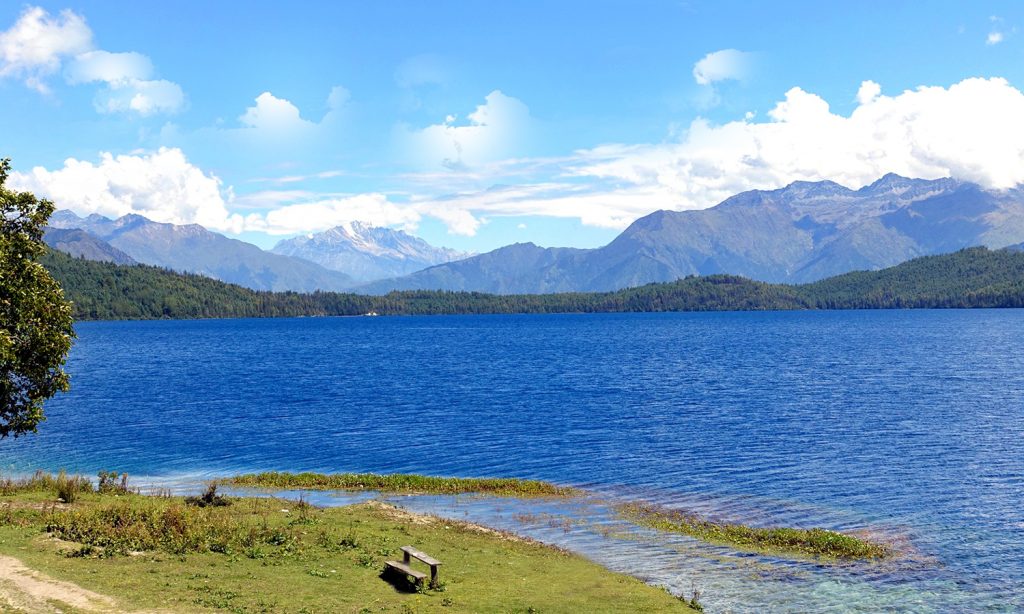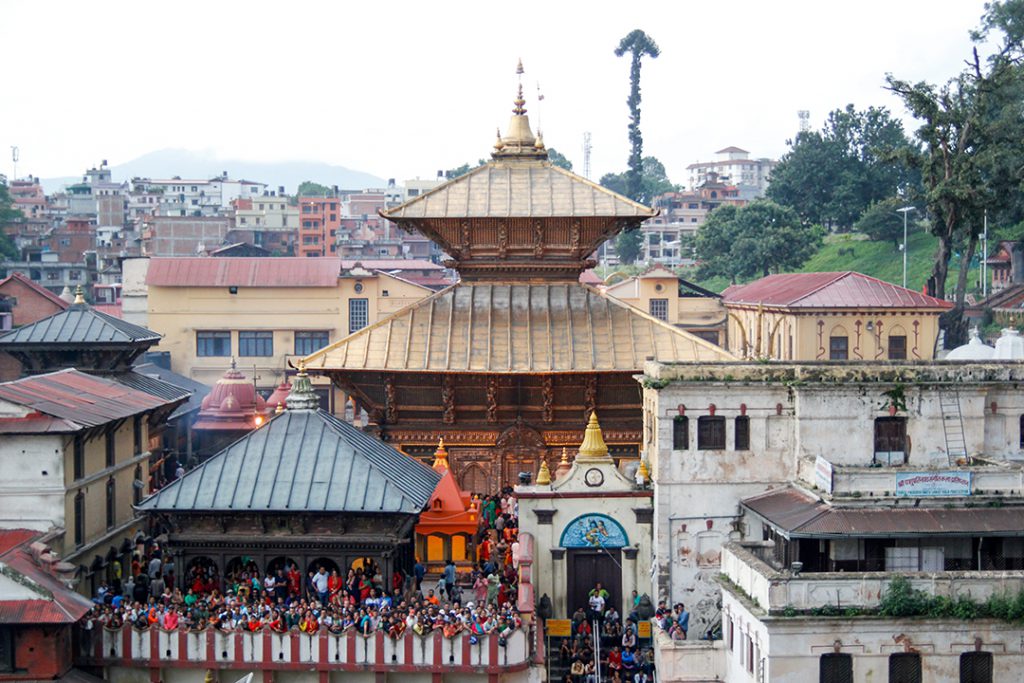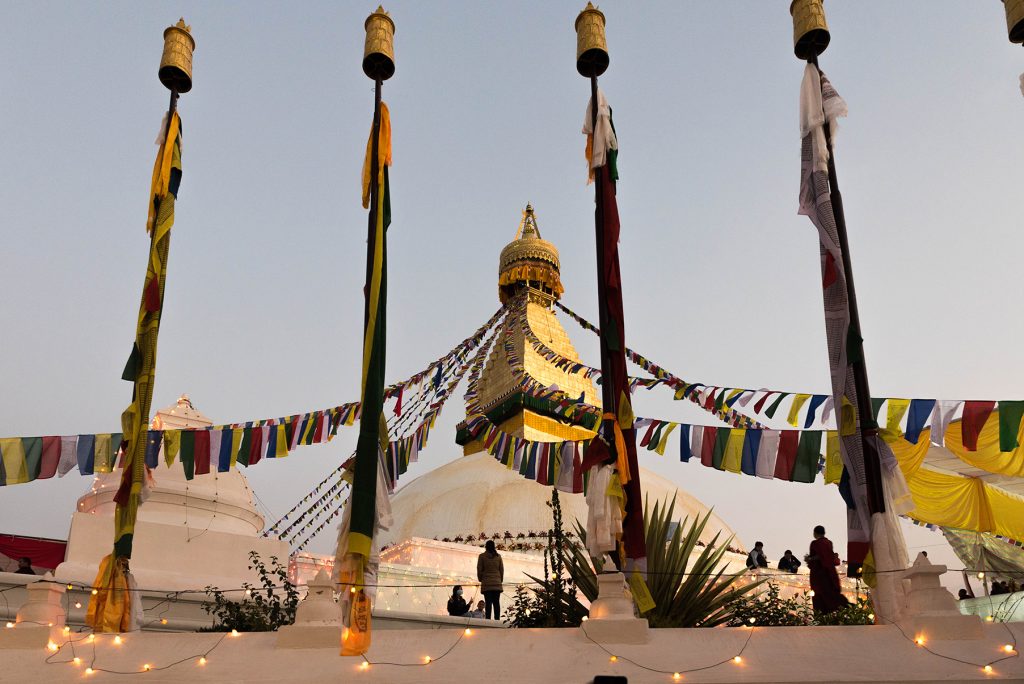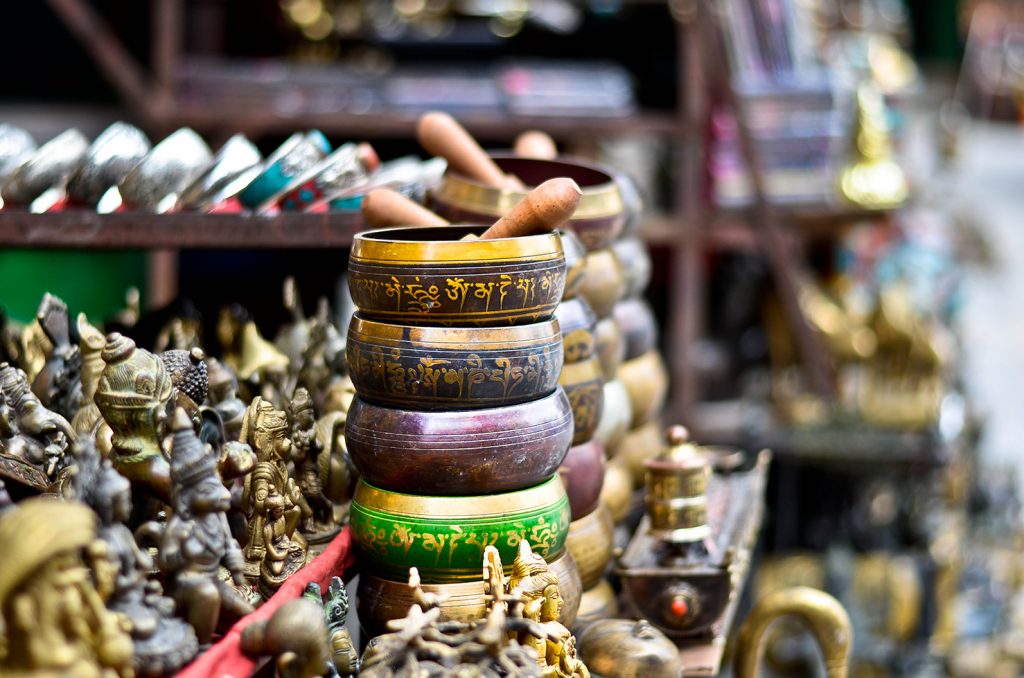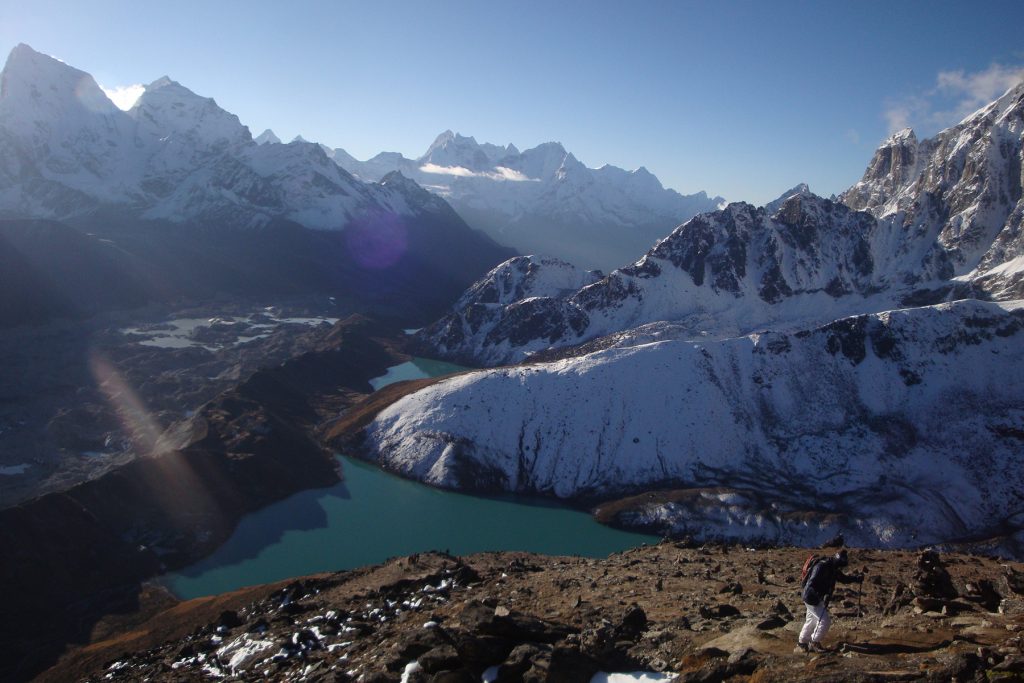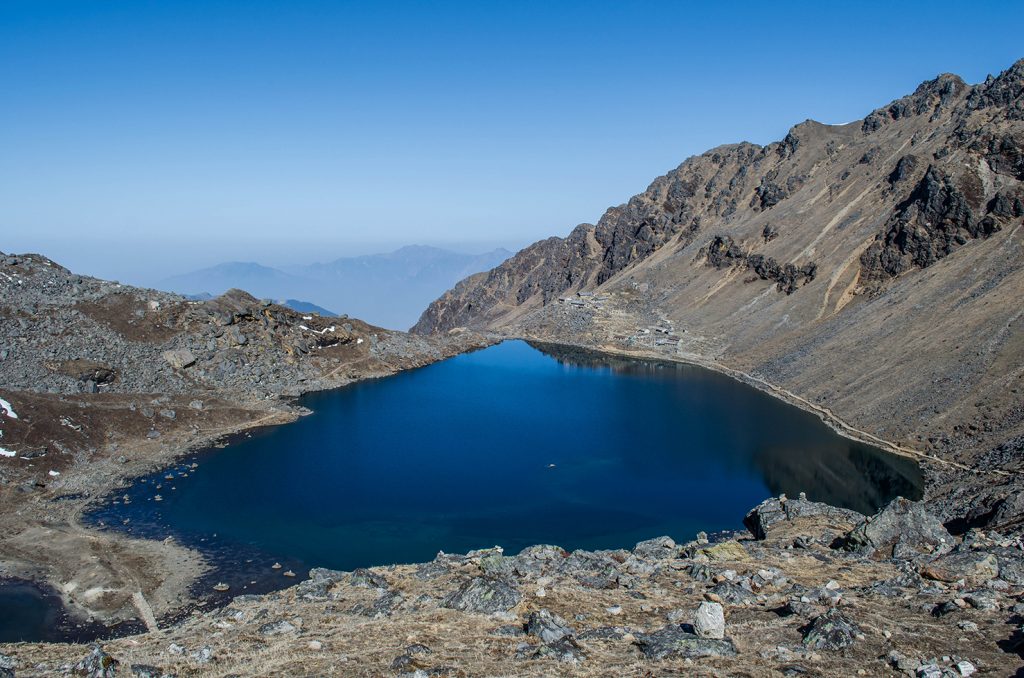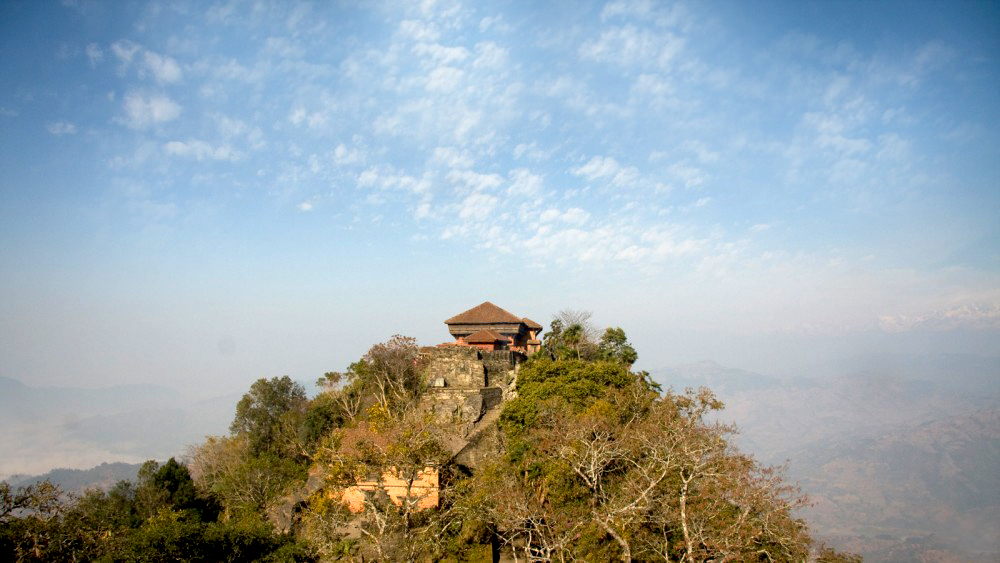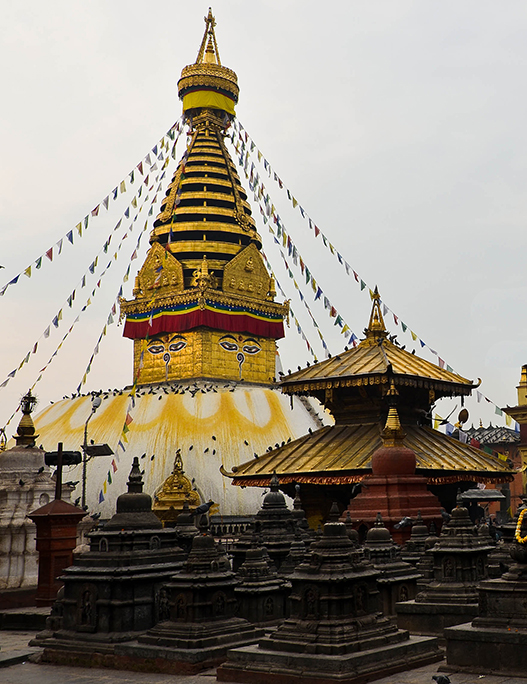
Swayambhunath lies 77m above the sea level of the Kathmandu valley which is one of the holiest Buddhist Chaityas in Nepal. It is also known as monkey temple as there are lots of monkeys. It was listed in the UNESCO World Heritage Monument List in 1979. Swayambhunath sits atop its hill, overlooking most parts of the valley. This is a good place to catch panoramic views of the city.
History
It is said to have evolved spontaneously when the valley was created out of a primordial lake more than 2,000 years ago. Swayambhu literally means “self-existent one”. According to historical beliefs it was built by King Manadeva at the beginning of the 5th century. By the 13th century, Swayambhunath had developed into an important center of Buddhism. This stupa is the oldest of its kind in Nepal and has numerous shrines and monasteries on its premises.
Places to Explore Around Swayambhunath
The main entrance has 365 stone steps which need to be climbed before reaching the main stupa complex. The main attraction is a large white stupa surrounded by many small shrines and temples. On each of the four sides of the main stupa there are a pair of big eyes. These eyes are symbolic of God’s all-seeing perspective. There is no nose between the eyes but rather a representation of the number one in the Nepali alphabet, signifying that the single way to enlightenment is through the Buddhist path. Above each pair of eyes is another eye, the third eye, signifying the wisdom of looking within. No ears are shown because it is said the Buddha is not interested in hearing prayers in praise of him. The base of the hill is almost entirely surrounded by prayer wheels that were recently installed.
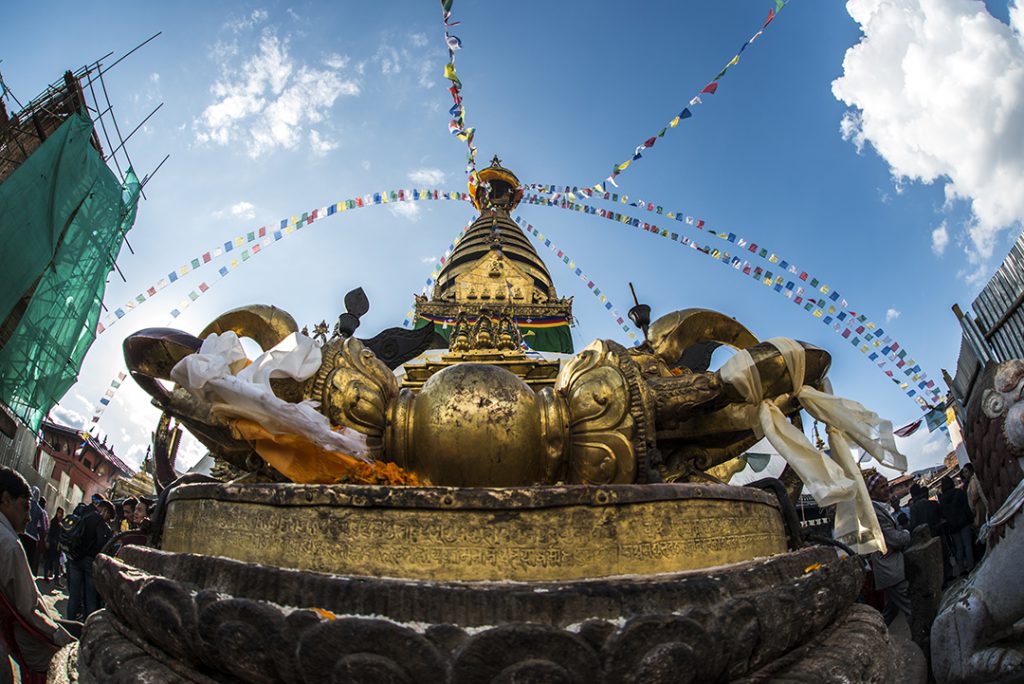
There are lots of chaityas, temples, painted images of deities and numerous other religious objects. In addition to this there are many small shrines with statues of Tantric and shamanistic deities, prayer wheels for the Tibetan Buddhists, Shiva lingams (now disguised as Buddhist chaityas and decorated with the faces of the the Dhyani Buddhas) to explore. A popular Hindu temple dedicated to Harati Ma, the Goddess of smallpox and other epidemics also sits at the left side of the Swayambhunath temple. Harati Ma is the goddess of all children. It is said that she was an ogress before Lord Buddha converted her to be the caretaker of all children. Atop Swayambhunath hill is another smaller but fascinating temple, called Shantipur, the ‘Place of Peace’. Inside this temple in a secret, always locked, underground chamber lives the 8th century Tantric master Shantikar Acharya. Behind the Swayambhunath hilltop is a temple dedicated to Manjusri or Saraswati, the Goddess of learning.

